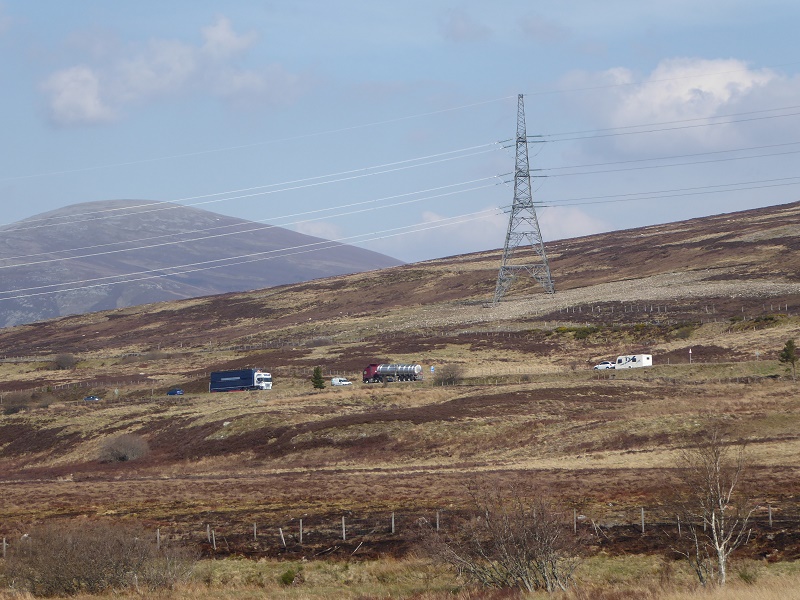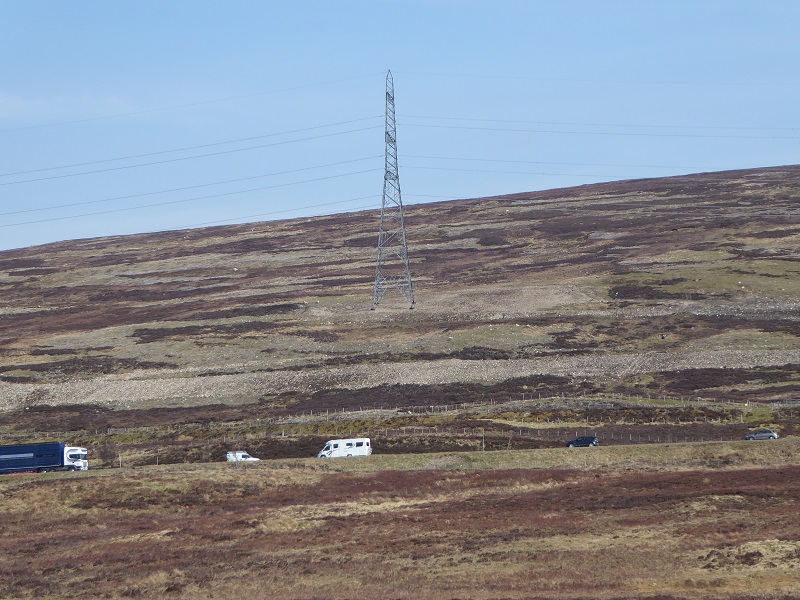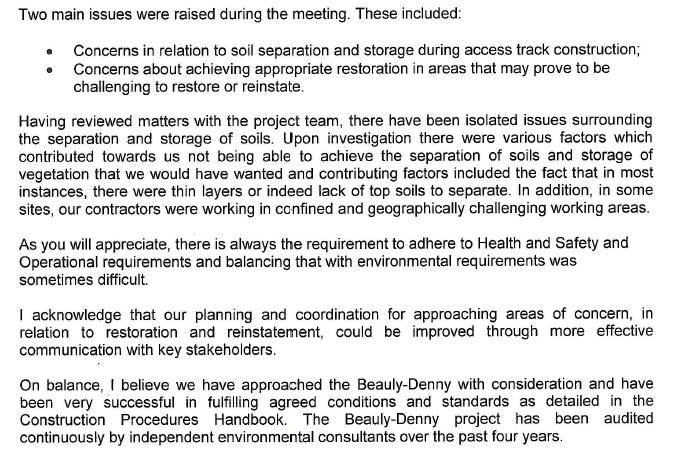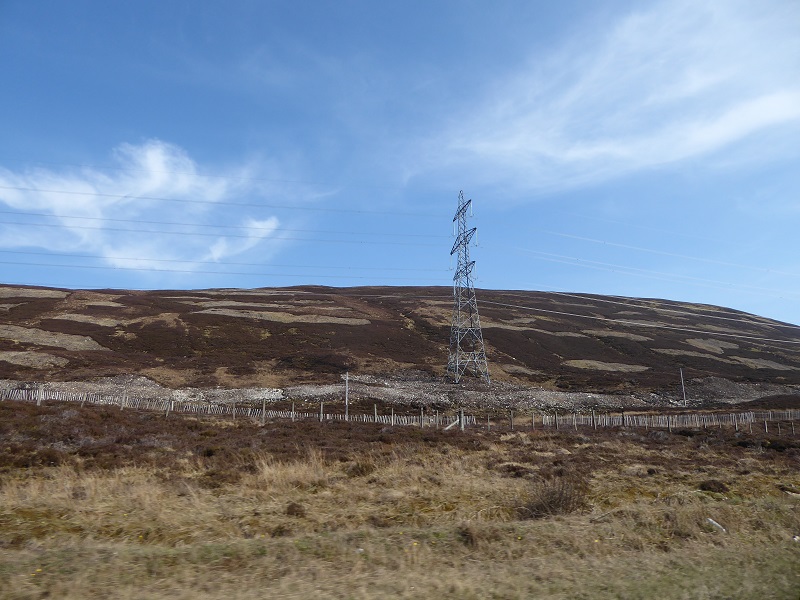
In my last post on the Beauly Denny restoration (see here), I referred to the apparent contradictory views on who is responsible for ensuring the land is properly restored to its original condition, a requirement of the planning consent for the powerline granted by the Scottish Government. The restoration of much of the ground in the Cairngorms National Park falls well short of what we should expect in a National Park (see photos).
A Scottish Government official had told me the Cairngorms National Park Authority is responsible for enforcing the planning condition while an officer of the CNPA had told the North East MountainTrust that they thought the Scottish Government is responsible. I am grateful to the reader who draw my attention to the Guidance from the Scottish Government Energy Consents and Deployment Unit (ECDU) on this topic (see here).
Ostensibly the Scottish Government official was right. The Guidance states:
ECDU, in consultation with the relevant Planning Authority, SEPA and SNH, who will all be asked to provide regular reports to ECDU, will monitor the performance of applicants in complying with the above conditions. The discharge, compliance and enforcement of deemed planning conditions is overseen by the relevant planning authority.
While there are complexities to the legal position of which is the planning authority in this case, the CNPA not having full planning powers, in practice the CNPA rather than Highland Council has taken the lead on the Beauly Denny (to its credit) so I think it is clear it is responsible for enforcing the planning conditions.
The problem however is the Guidance makes it clear that the Scottish Government is responsible for monitoring compliance with the planning conditions. It’s difficult to see how legally CNPA could start taking enforcement action unless the Scottish Government accepted this was needed: Scottish and Southern Electric as developer could probably block any enforcement action in court on the basis that there was no evidence that the Scottish Government as the official monitoring body was concerned about the quality of the “restoration”.
So what is the position of the Scottish Government on the quality of the restoration?

From what I have been able to ascertain from a Freedom of Information request to the CNPA, the Scottish Government is doing very little to monitor critically the performance of SSE. While I might be wrong about this – I have not for example asked the SG yet for the information they hold on this – what appears to be happening is the SG are meeting SSE without SNH and CNPA present. Indeed CNPA were kept so far out the loop that in July 2015 the liaison process had to be explained to them by SSE 150729BDUpdateMeetingNote.
This is important because the CNPA has been raising serious concerns about the standard of the restoration. First, the then convener of the CNPA Duncan Bryden wrote to SSE outlining their serious concerns after a Board visit to the site 250615trackrestorationSSE:
Despite a long period of period of pre planning and preparation it does not appear to the CNPA that the methods used are commensurate with National Park sensitivities (including Natura 2000 designations), nor the high- profile nature of the works, immediately adjacent to and often highly visible from the A9, Highland main line, National Cycle Route 7 and surrounding Munros. For example, the original vegetation and turfs have not been removed and stored in such a way as to facilitate regeneration and there has been significant soil compaction and mixing of soil horizons.
These concerns were reinforced by CNPA officers at the meeting in July when the asked some SSE some crucial questions:
Why, given that certain activities had been planned, had they not then been implemented? Why, given that this was always known to be a challenging and high profile site, and that work was going on at present were the plans for re-vegetation/restoration not at more advanced stage?
The response from SSE, which claims to a company with aspirations to being green and socially responsible, avoids the issues 250615trackrestorationSSE Mr D Bryden CNPA Response 26 August 2015:

The photographic evidence in my view contradicts the claim by SSE that “there have been isolated issues surrounding the separation and storage of soils” and that the whole project has been very successful. The Scottish Government needs to test the corporate governance speak against what can be seen on the ground.

While I have not yet been able to work out the numbers of all the pylons, in the monitoring produced in October 2016 SSE states that for almost all pylons on this section of line “Re-instatement of the soils is to an acceptable standard”. The photos I believe show otherwise and that the CNPA was completely right to raise concerns.
What needs to happen
What’s not in the public realm at present (as far as I have been able to ascertain) is whether the CNPA’s concerns have been submitted to the Scottish Government, and if so what the Scottish Government’s response has been. What is needed is join up between the Scottish Government’s ECDU and the CNPA and SNH. While a first step would be joint monitoring meetings, I think there also needs to be a joint approach to remedying what has gone wrong.
Meantime, at the end of April there was some good news about the impact of the Beauly Denny on the landscape in the National Park (see here). The pylons between Aviemore and Kingussie, including those that blight the extension to the Speyside Way (see here), are being removed. Although the CNPA did not manage to block the Beauly Denny they did achieve removal of these powerlines as a compensatory measure. The challenge now for the CNPA (and for landscape campaigners) is not to allow the Scottish Government to treat that welcome “compensatory improvement” as sufficient and the Beauly Denny as job done while burying their heads in the new soils that have been created at Drumochter.
That’ll be the same SSE now pursuing the John Muir Trust for £350 000 in the wake of the Stronelairg case. Perhaps they’ll use their illgotten gains to pay for some real restoration work before they wreck yet another part of the Highlands.